Plan your China tour in autumn? Autumn leaf peeping time in China varies from north to south, and east to west given the size of China and its diversity of climate and geography. Basically from mid-October to mid-November, most of China's landscapes start to transform from their summer shades of green into the reds, oranges and yellows, signs of the colorful autumn.
If you are a leaf peeping fan and happen to visit China during the fall foliage period, you may choose one or two places to comfort your eyes and relax yourself with viewing the autumn leaves. We at Tour Beijing have leafed through the top 10 fall foliage destinations in China that we think are worth your exploration on your China autumn trip.
1. Ejina Qi (Banner), Inner Mongolia 内蒙古额济纳旗
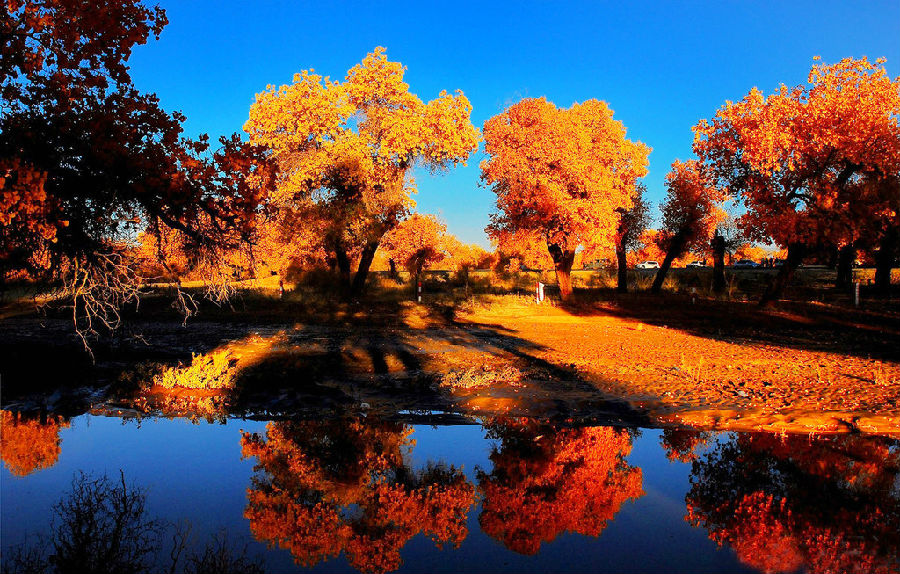
Ejina Banner is in the most west end of Alashan, west of Inner Mongolia, adjacent to Alxa Right Banner in the east. Ejina Banner has a drought, extreme arid desert steppe climate with four distinctive seasons. It features rainless, abundant sunshine, and great temperature difference. The annual average temperature is 8.3℃. The number of annual dust storm is up to 14.
Ejina Diversifolius Poplar Forest National Nature Reserve is one of the three largest poplar forests in the world with mesmerizing autumn scenes sought after by numerous tourists and photographers.
Best Visit Time: October
Transport:
Ejina Banner is linked to Hohhot by an overnight train 15 hours. If you'd like to travel to Alxa Left Banner, you may choose first to take your train to Yinchuan, the capital city of Ningxia, then drive 114km up to Bayanhot, the capital of Alashan.
Overland travel is the most popular mode of traveling around Alashan. The three banners (Left, Right and Ejina) are connected by the regional roads. Also the three banners are linked to outside cities or provinces through a few destinations.
2. Moerdaoga National Forest Park, Inner Mongolia 内蒙古莫尔道嘎国家森林公园
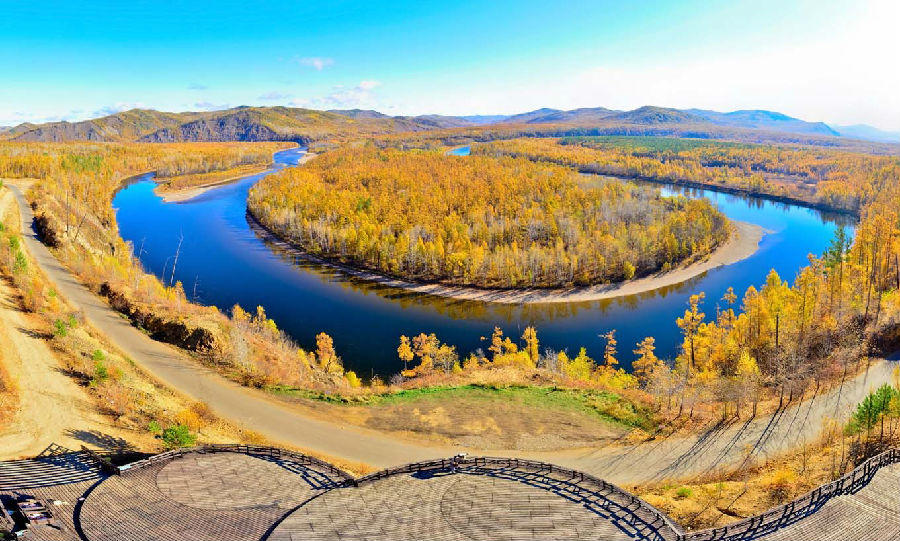
Moerdaoga National Forest Park ia the first national forest park in the Greater Khingan Range (Greater Xing'an Mountain ) within Inner Mongolia Autonomous Region, the biggest national forest park of its kind in China.
Moerdaoga" literally means that "set out for flight riding your horses" that was legendarily said by Genghis Khan who tried to integrate the tribes. The forest park is adjacent to the Hulunbuir Grassland on the south, the Erguna River on the north, packed with old and tall trees and numerous streams and rivers. The Moerdaoga turns into a "five-color mountain", a perfect place to see autumn leaves.
Best Visit Time: Late September and early October
Transport:
It is quite convenient to travel to Hulunbeier by train with wide train network. Hailar has trains connecting Beijing, Baotou, Hohhot, Harbin, Dalian, Qiqihaer, Boketu, Moerdaoga, Manzhouli, Jiaergeda. So beside Hailaer, many of the cities and banners has railway stations, forming easy train routes within Hulunbuir. Or you may take long-distance buses to Moerdaoga.
3. Kanas, Xinjiang 新疆喀纳斯
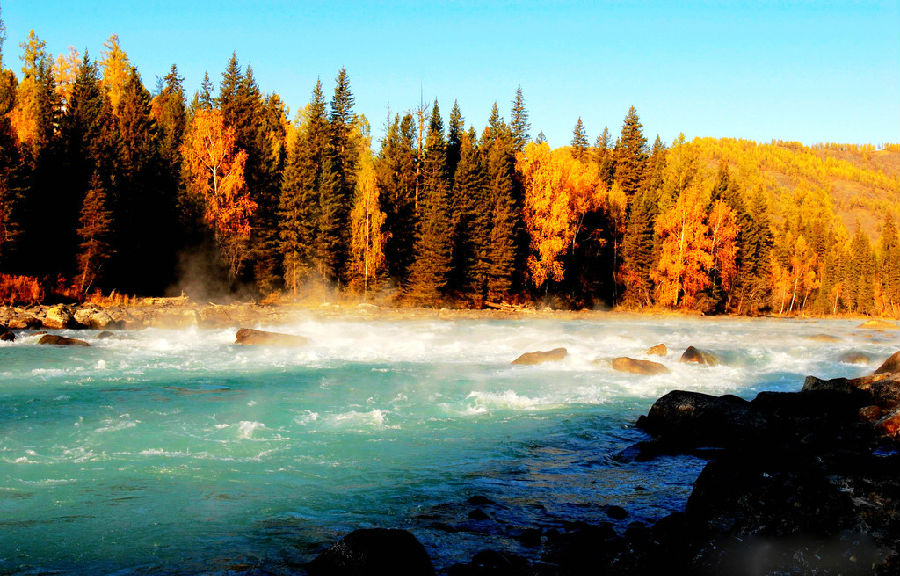
Kanas is located in the northern tip of Xinjiang. The Kanas Lake (Kanasi Hu) means "beautiful, rich and mysterious" in Mongolian. The lake is nestled in the deep forests and mountains of Altay. The lake is 1,374m above sea level and covers an area of 45sqkm (10 times bigger than Tianchi on Bogda Mountain) with the deepest point of 188m.
The long bean-shaped lake reflects the surrounding snowcapped mountains. The Kanas Lake in autumn is at its best with the beautiful foliage. Legend has it that huge monsters live in the lake. They often has taken away horses and camels drinking into the water by the lake and later swallow them, a similar story of "Nessie Monster".
Best Visit Time: Late September and early October
Transport: Take flights or travel overland to Kanas.
4. Miyaluo, Sichuan 四川米亚罗
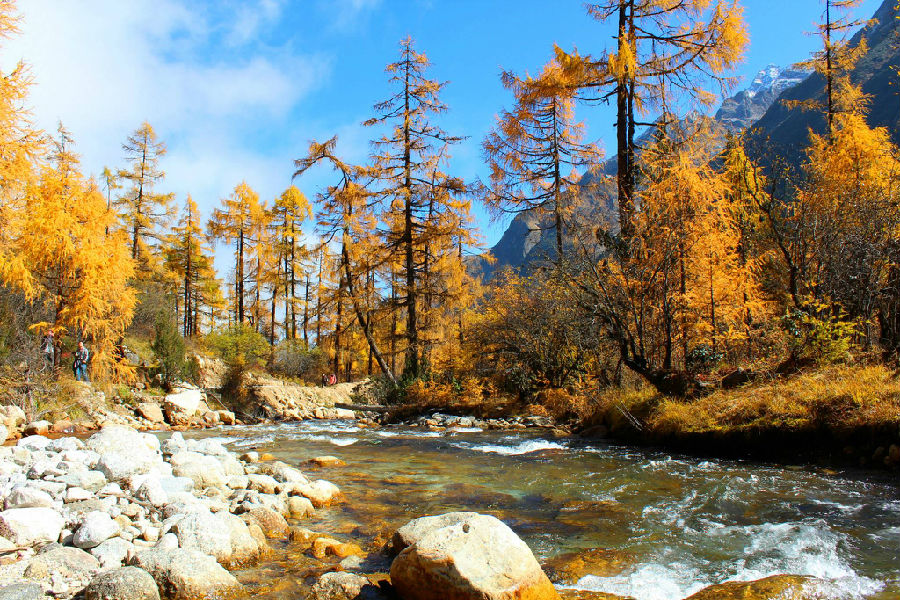
Miyaluo, literally "Playful Pateau" in Tibetan, is located in Li County, Ngawa Tibetan and Qiang Autonomous Prefecture, about 263 km north of Chengdu, between Chengdu and Jiuzhaigou.
Miyaluo Scenic Area is the largest red leaves viewing landscape in China, with 3688 square km, 127 km long from east to west, and 29 km wide from north to south, 180 the size of Fragrant Hill Red Leaves Scenic Area in Beijing. When autumn comes, the whole Miyaluo becomes a sea of red leaves, a stunning view of the fall foliage seldom seen elsewhere.
Best Visit Time: Mid-September – Mid-October
Transport: Take buses from Chengdu to Miyaluo.
5. Daocheng, Sichuan 四川稻城俄初山
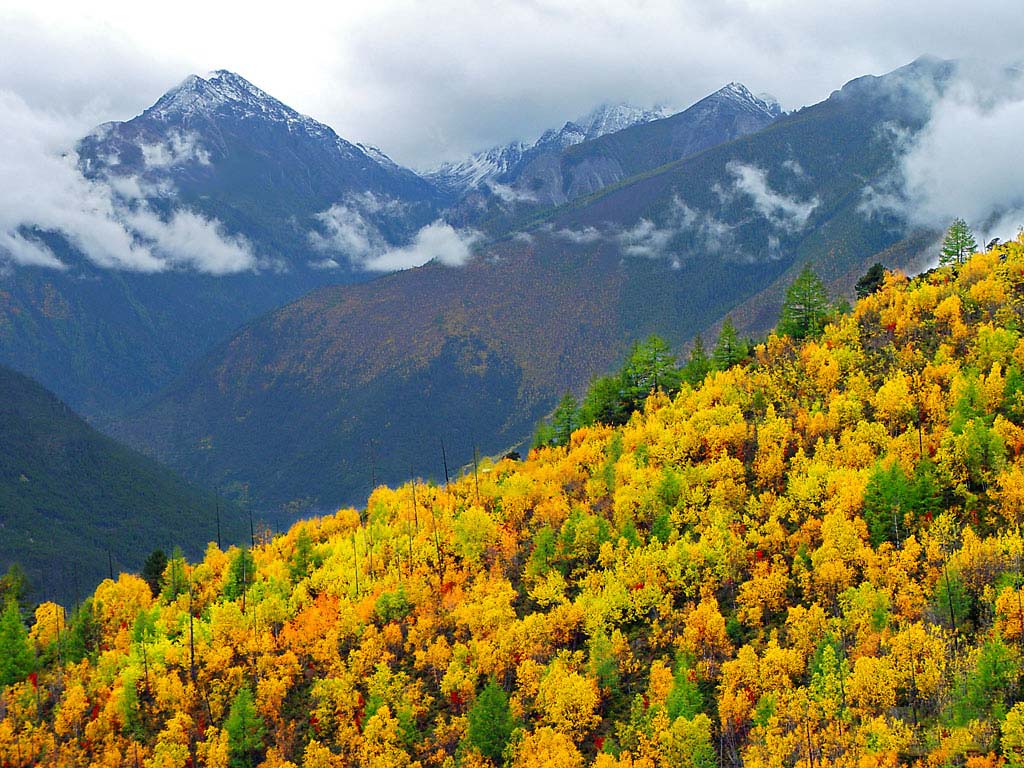
Daocheng is a county under Garze Tibetan Autonomous Prefecture, on the most southwestern Sichuan, about 760 km from Chengdu. Daocheng is a mysterious and pure plateau, a place enticing numerous travelers for spiritual fulfillment.The stunning beauty of Dacheng is the autumn colors that bounce off from Echu Mountain (Mt.Echu). "Echu" literally means "glistering mountain". It is a high mountain at the altitude of 5140 meters. Hiking up the valleys, you will see the layers of forests coated by myriad colors, red, yellow, orange, green, a mesmerizing spectacle.
Best Visit Time: Mid- September – Mid-October
Transport: Take buses from Chengdu to Daocheng
6. Jiuzhaigou National Park , Sichuan 四川九寨沟
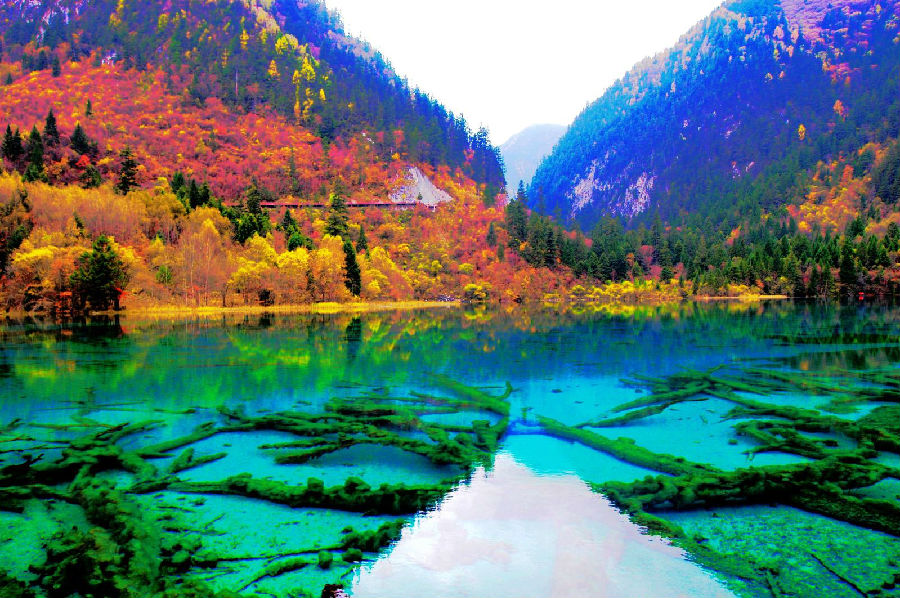
Jiuzhaigou literally means "Nine Village Valley" in Chinese. Listed as World Cultural Heritage in 1992. Jiuzhaigou is well known for its beautiful water – multi-level waterfalls and colorful lakes, and magnificent autumn scenery. Jiuzhaigou is located in Jiuzhaigou County of the Aba Tibetan Qiang Autonomous Prefecture in Sichuan Province, 436km north of Chengdu, the capital city of Sichuan Province.Jiuzhaigou has three valleys naturally formed in a Y shape. The Rize Valley 17km long and Zechawa Valley 18km long flow from the south and meet at a confluence where they form the Shuzheng valley 15km long in the middle, continuing to flow north to the mouth of the Shuzheng Valley. All the three valleys are accessible both by shuttle bus and boardwalks.
There are 17 waterfall groups, 47 springs and 114 lakes in the park. People usually first visit Shuzheng Valley, then either visit Rize Valley or Zechawa Valley. People have to spend almost whole day in the three valleys. There is a service center in the confluence where the three valleys meet with a big restaurant providing three kind of buffet lunch. There is also a grocery by the restaurant where you can buy instant noodles, biscuits, fruits, water and mnay more to feed yourself.
Visiting Time: suggested 1-3 day
Entrance Fee: RMB 220 (peak season) and RMB 80 (winter season)
Location: 436km north of Chengdu, the capital city of Sichuan Province
Opening Hours: 6:30 – 18:00 (April – Nov.15); 6:30 – 17:00 (Nov.16 – March);
Best Time to Visit: Mid-October to early November
How to Get There
First take flight from Chengdu to Jiuhuang Airport where you connect the local bus for Jiuzhaigou
7. Wulingyuan (Zhangjiajie) 武陵源(张家界)
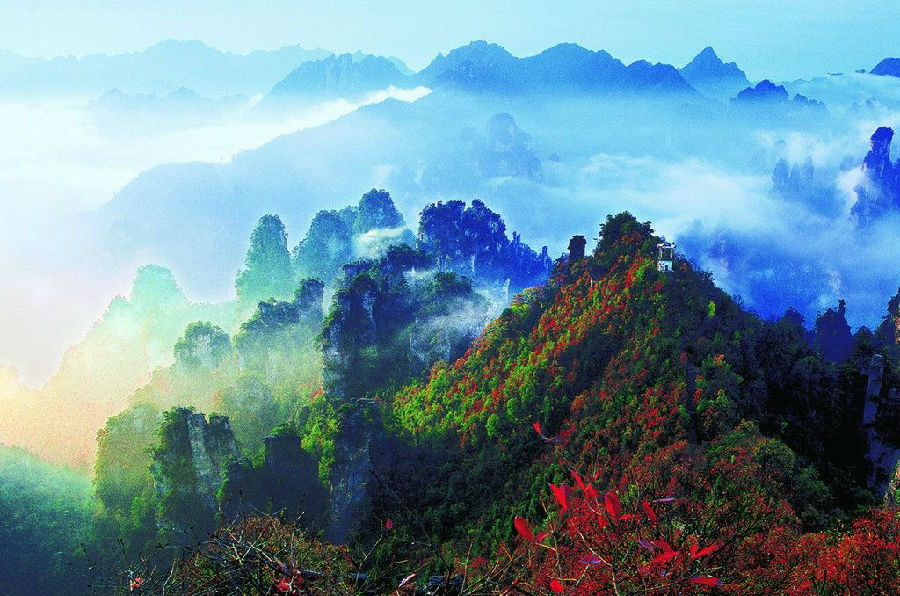
Wulingyuan Scenic Area is located about 30 km north of Zhangjiajie's city center. Wulingyuan Scenic Area was listed with UNESCO World Heritage 1992. This world heritage site is popularly known as "Zhangjiajie Senic Area" rather than "Wulingyuan" mainly because Wulingyuan Scenic Area is under the administration of Zhangjiajie City.
Wulingyuan Scenic Area (Zhangjiajie Scenic Area) includes three main areas: Zhangjiajie National Forest Park, Tianzi Mountain Nature Reserve and, Suoxi Valley Natural Resource Reserve (including Baofeng Lake and Yellow Dragon Cave). The American film – Avatar depicted "Hallelujah Mountain" by taking the real view of "South Pillar of the Heaven", a famous attraction in Wulingyuan Scenic Area.
Wulingyuan Scenic Area are famous for its unique hills, queer rocks and peaks, tranquil valleys, clear streams, abundant fauna and flora and hospitable climate.
Visiting Time: suggested 2-3 Days
Entrance Fee: RMB 248 (a through ticket)
Location: about 30 km north of Zhangjiajie's city center
Opening Hours: All day
Best Time to Visit: Mid-October to Mid-November
How to Get There
Zhangjiajie is easily accessible by air, train and highway. Then connect local buses going to Wulingyuan Scenic Area.
8. Wushan, Chongqing 重庆巫山红叶
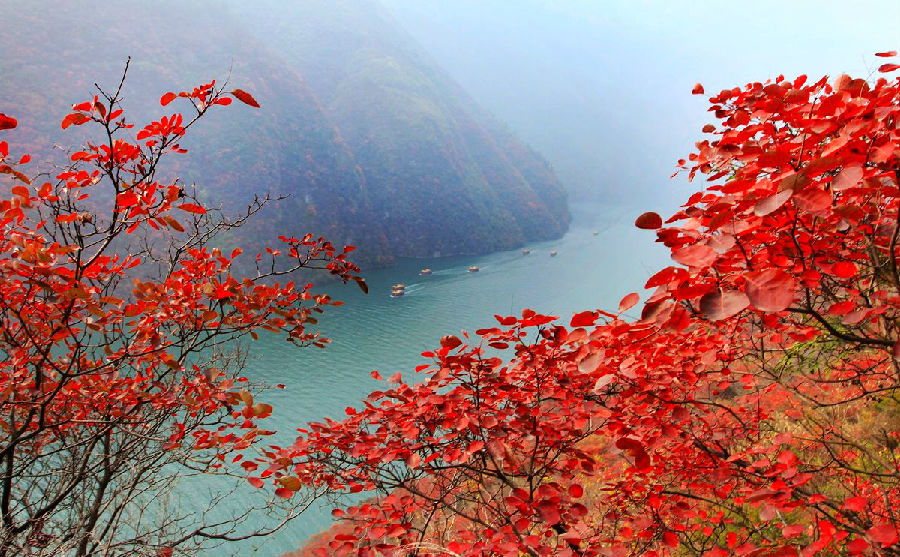
Wushan County is in the northeast of Chongqing with Yangtze River passing through, about 437 km to the northeast of Chongqing's city center. Wushan's temperature provides a perfect condition for the growth of maple and other red leaf trees.
Every year Wushan entice huge number of visitors to experience the stunning mixed landscape of rivers, mountains and red leaves. The red leaves at Wushan have a longer period of leaf peeping from late September to December.
Visiting Time: suggested 1-2 Day
Location: about 437 km northeast of Chongqing's city center
Opening Hours: All day
Best Time to Visit: October – November
How to Get There
Buses or boats from Chongqing or Yichang.
9. Qixiashan, Jiansu 江苏南京栖霞山
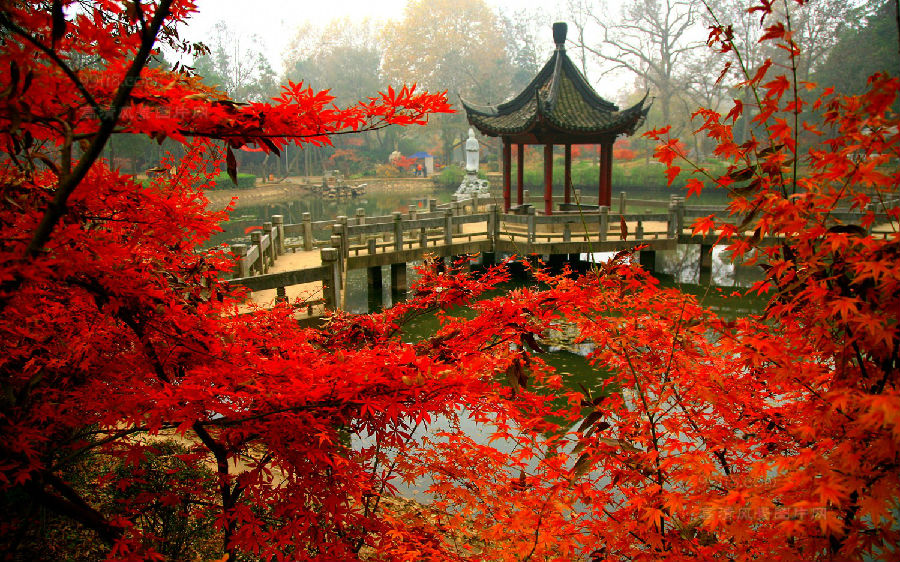
Qixiashan Scenic Area is located in Qixiashan District of Nanjing, about 26 km to the northeast of Nanjing's city center. Qixiashan has three peaks – the main peak is Fengxiang Peak at the altitude of 286 meters; Longshan Peak on the northeast and Hushan Peak on the northwest. Qixiashan is rich in ecological fossils and oft lauded as "Natural Geography Museum".
Qixiashan is peppered with historical relics and sites. But its biggest draw is its autumn color. Qixiashan is reputed as one of the four most famous maple leaf viewing spots in China. When autumn comes, the while mountain area is blanketed with red leaves of maple trees.
Visiting Time: suggested 2-4 hour
Location: about 26 km northeast of Nanjing's city center
Best Time to Visit: October – November
How to Get There
Buses or from Nanjing city center
10. Fragrant Hill 北京香山
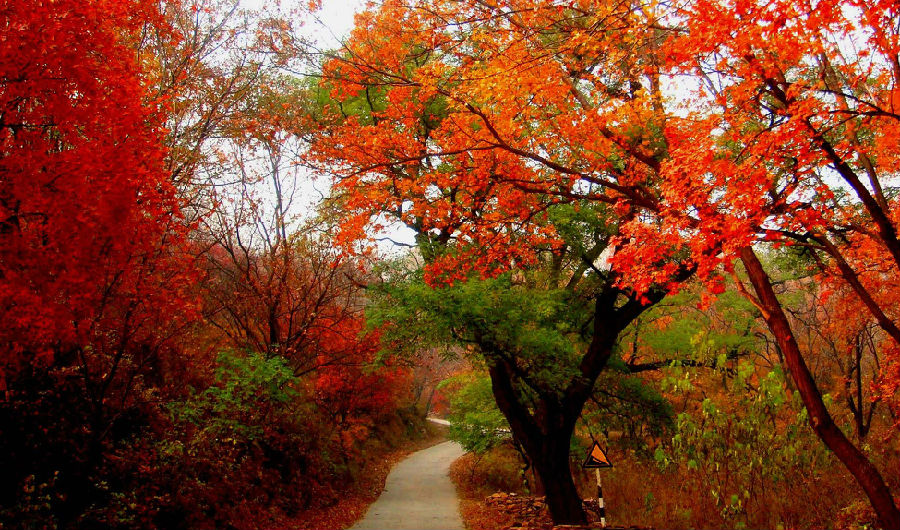
Located in the east part of western hills and 28 kilometers northwest of the Beijing City, Fragrant Hills Park is a large park of hills and forest. It is rich both in natural sceneries and cultural relics. Its highest peak is Xianglu Peak (Incense Burner Peak), 557 meters high.
The hill is dotted with maple trees, smoke trees and persimmon trees. When autumn arrives, fiery red leaves blanket the entire mountain. Every year, a huge number of tourists flock to the park. The cable cars are a great way to hike up the hill and enjoy the spectacular fall scenes at the same time.
Visiting Time: suggested 3-4 hour
Entrance Fee: RMB 10
Location: Northwest of Beijing
Opening Hours: 6:30 – 19:00
Best Time to Visit: Mid-October to early November
How to Get There
Take public buses
Source: Tour Beijing



 闽公网安备 35020302035673号
闽公网安备 35020302035673号
0 responses on "Where to see autumn leaves in China?"